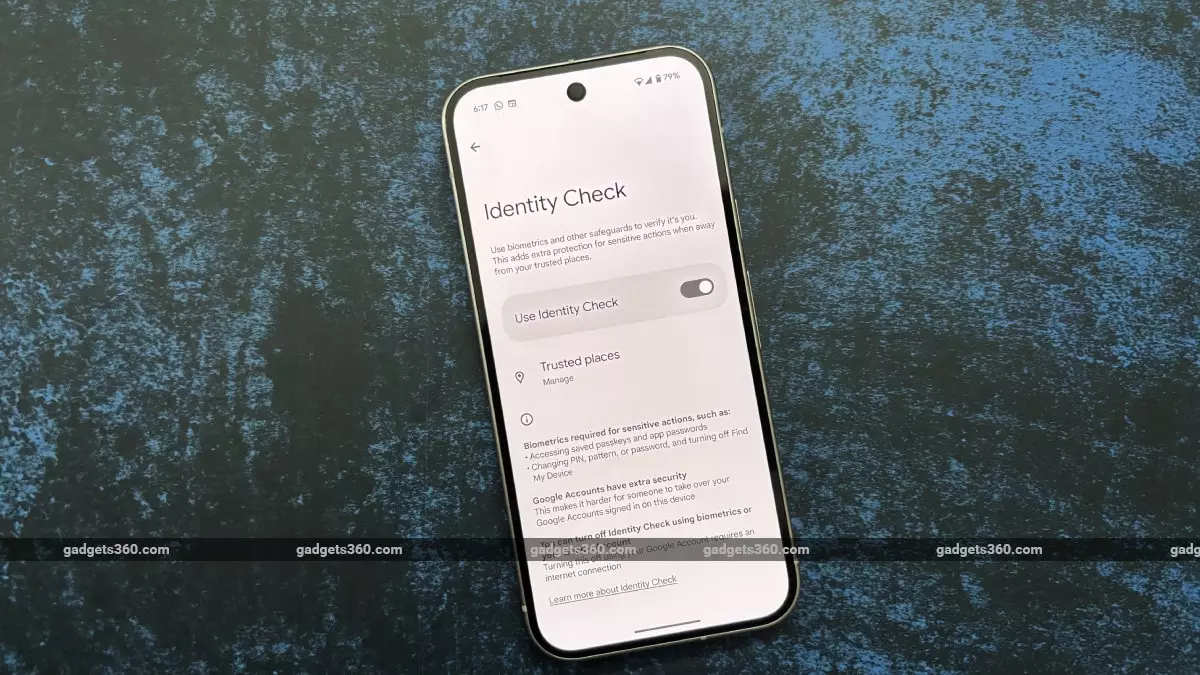In a world increasingly dominated by digital transactions and communications, the question of security is more pressing than ever. A smartphone is not merely a device; it is a lifeline to personal data, financial accounts, and private conversations. As cybercriminals become more sophisticated, the need for robust security features is paramount. Google’s latest initiative, the expansion of the Identity Check security feature for Android devices, is a timely response to these escalating threats. This move not only reflects a heightened awareness of digital safety but also reinforces the sentiment that individuals must take proactive steps to protect their digital identities.
The Identity Check feature requires biometric authentication—fingerprints or facial recognition—before enabling modifications to critical settings on the device. This is crucial because, despite advancements in security technology, many users remain complacent, often falling for phishing scams or neglecting basic protective measures. While Apple introduced a similar feature in its iOS 17.3 update, Google’s decision to offer Identity Check on a wider range of devices demonstrates a commitment to inclusivity in security innovation.
A Step Toward Inclusive Security
Historically, security features have often been the exclusive reserve of flagship smartphone models. For too long, individuals with less expensive or older models have been left vulnerable. The introduction of Identity Check across various Android devices is a significant step toward democratizing security. By rolling this feature out to models beyond just the high-end spectrum, Google acknowledges that threats are not confined to any economic class. Everyone deserves protection, and Identity Check serves as an equalizer in ensuring that all Android smartphone users can benefit from enhanced security.
In a fully connected world, it is essential that security measures keep pace with technological advancements. Identity Check enforces this principle by safeguarding user accounts from unauthorized access—even if a thief has access to the device’s passcode. The reality is that many people rely on easily memorable passwords, making it all too simple for malicious actors to take control if they gain physical access to the device. Identity Check builds a formidable barrier against such scenarios, reminding us that our technological conveniences should not expose us to undue risk.
The Role of Biometric Authentication
Critics often express skepticism about the efficacy of biometric authentication, fearing that it can be circumvented or that it raises privacy concerns. However, in the context of features like Identity Check, biometrics can provide a significant level of assurance. The use of class 3 biometric authentication ensures that users establish not just a password, but a unique physical characteristic that’s challenging to replicate. This dual layer of protection—requiring both possession of the device and a biometric signature—provides a more robust security framework than traditional passwords alone.
One could argue that reliance on biometric data enhances convenience without compromising security. Users have the reassurance that their data is protected against unauthorized access, which can be particularly crucial in today’s climate of identity theft and rampant cybercrime. Moreover, enabling features that secure sensitive actions away from “trusted” locations fosters a culture of vigilance and awareness. This kind of environment encourages users to actively participate in their security processes rather than feel helpless and passive as potential victims.
A Collective Responsibility
While Google’s Identity Check offers promising security advancements, the true defense against digital threats requires a broader societal shift in how we perceive and handle our digital identities. Tech companies bear a significant responsibility in providing robust security features, but users must also embrace a mentality of active engagement with their own data protection. This entails not only utilizing tools like Identity Check but also understanding best practices for digital security, including regular password updates and skepticism towards unsolicited communications.
Additionally, the collaboration between tech giants—like Google and Apple—around similar protective measures could foster a competitive environment that continually elevates security standards across devices. This cooperative spirit is essential in pushing the industry toward innovations that make the digital landscape safer for everyone.
As Identity Check spreads across platforms and devices, its implications echo far beyond individual security, signaling a collective awakening to the importance of safeguarding our digital lives in an era where technology and daily existence are inextricably linked. The future of digital security depends on a fusion of innovative technology, personal vigilance, and a societal recognition of our responsibility to safeguard not just our devices but our identities themselves.

Leave a Reply